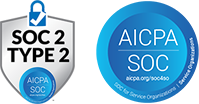What Is Defined Benefit Plan?
A Defined Benefit Plan is a retirement program in which employers commit to pay employees a predetermined benefit—typically calculated by a formula based on final salary and years of service—at retirement. The employer bears investment risk, funds the benefit through actuarial contributions, and guarantees a specific payout stream, unlike defined contribution plans where the employee’s eventual benefit depends on investment performance.
Why Defined Benefit Plan Matters
Defined Benefit Plans provide predictable retirement income, enhancing employee loyalty and long-term financial security. They help organizations attract and retain talent—especially in industries with extended career horizons—by offering a stable post-retirement promise. From a People Analytics perspective, tracking plan liabilities and participation rates informs workforce-cost forecasting and supports strategic talent-management decisions.
Where Defined Benefit Plan Is Used
- Public Sector & Education: Teachers, civil servants, and government workers rely on DB plans for dependable retirement income.
- Large Corporations: Industries like utilities, manufacturing, and finance historically offered DB plans to senior employees.
- Unionized Workforces: Collective bargaining often secures DB benefits as part of compensation packages.
- Nonprofits: Some long-standing nonprofits maintain DB plans for long-tenure staff.
- Professional Services: Law and consulting firms may offer DB plans alongside profit-sharing to senior partners.
Defined Benefit Plan Key Benefits
- Guaranteed Income: Employees receive a fixed, formula-based benefit, removing personal investment risk.
- Retention Hook: Vesting schedules tied to service years encourage long-term employment.
- Predictable Costs: Employers can use actuarial forecasts to budget future benefit obligations.
- Equity Across Cohorts: Benefits scale by tenure and salary, supporting fairness among long-serving staff.
- Strategic Analytics: People Analytics can model plan funding status, project cash-flow impacts, and guide talent-management strategies.
Best Practices & Examples
- Regular Actuarial Reviews: Conduct annual valuations to adjust contributions and ensure plan solvency.
- Transparent Communication: Share funding status and projected benefits with employees via dashboards.
- Hybrid Options: Combine DB plans with defined contribution (DC) features—like lump-sum choices—to balance risk.
- Succession Planning: Use analytics to forecast retirements and talent gaps tied to DB benefit triggers.
- Risk Mitigation: Hedge interest-rate and longevity risks through asset-liability matching or reinsurance.
Conclusion
Defined Benefit Plans offer employees a secure, formula-based retirement benefit and give employers a powerful tool for talent attraction and retention. By integrating People Analytics to monitor plan health, forecast liabilities, and align workforce strategies, organizations can manage costs, maintain competitiveness, and ensure employees’ long-term financial well-being.
Defined Benefit Plan FAQs
Q: Which is better, DC or DB pension?
A Defined Benefit (DB) pension delivers guaranteed retirement income based on salary and tenure, shifting investment risk to the employer. A Defined Contribution (DC) plan, like a 401(k), places investment risk on employees, with retirement outcomes tied to market performance.
Q: What is net defined benefit plan?
A net defined benefit plan refers to the funded status of a DB plan: the difference between plan assets and projected benefit obligations. A positive net status indicates a surplus; a negative status signals underfunding requiring additional employer contributions.
Q: What’s the difference between defined benefit and defined contribution?
Defined Benefit guarantees a specific payout formula at retirement with employer-funded contributions. Defined Contribution sets individual account contributions, but the final benefit depends on investment returns and employee risk choices.
Q: What is the difference between a 401(k) and a defined benefit retirement plan?
A 401(k) is a DC plan where employees contribute pre-tax wages into individual accounts, bearing investment risk. A DB plan promises a fixed pension amount funded and managed by the employer, offering predictable income but requiring actuarial funding.




